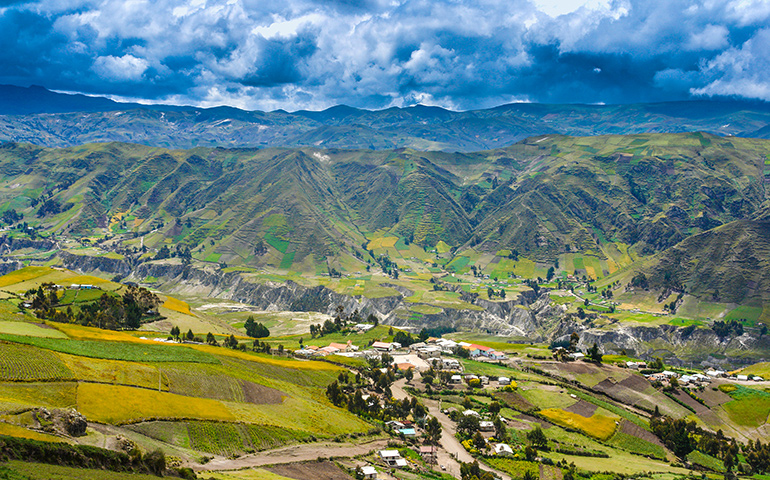My Travels to India
I have been to India many, many times. My parents were born there. I was born there. Whenever I travel there, I always look forward to staying with my grandparents and seeing my cousins and other family members. I usually go to India every two years and whenever I do go, it’s always a memorable trip. With each visit, I’ve noticed that there are differences in how we do things in India from the way we do them in Canada. Let me share the things I’ve noticed, like the culture, how people get around, how people shop, and which attractions tourists visit.
Shopping for groceries in India is way different from Canada. Although there are modern malls and department stores, they are few and far between. For most people, the way to get your groceries is to get up early in the morning and go to your local market. These markets are simply people’s stalls by the side of the road. On the main road near my grandparents’ house, there are people selling fruits, vegetables, fish, and whatever you need for the day. Note, for the day.
Before you go to the market, you plan out what you’re going to eat for the day, buy only what you need, and repeat the next day. These markets don’t have fixed prices. You bargain with the stall owner and pay what you deem fit for their products.
I once went with my grandfather one morning to buy fish and it was hectic. You must have good bargaining skills or you’re going to overpay.
These markets open early in the morning, close during the afternoon, reopen during the evening, and stay open until seven or eight o’clock in the evening.
In India, well paved roads are mostly in more affluent areas. Generally, most roads are bumpy and uneven but that doesn’t stop people from getting around. In India, most people don’t own cars, with only 7.5% of households owning one. On the other hand, 49.7% of households own a two-wheeler. Note these aren’t fancy road bikes, but locally made 100-200cc motorcycles and scooters. If you want to take public transport, your options include buses, inter-city or suburban railways, taxicabs, cycle rickshaws, or auto-rickshaws.
A cycle rickshaw is essentially a bicycle frame (minus the back tire), connected to a carriage seat with a collapsible hood, set on a 2-wheel axle, and usually set on a wooden frame. The passenger sits in the carriage while a man pedals the back wheels. An auto-rickshaw follows the same 3-wheel pattern, but it’s made of a complete metal body with a full roof covering and uses an engine. The passenger stills sit in the back, but the driver works and steers the vehicle with motorcycle handles and car pedals.
Buses and trains have fixed ticket prices and they are almost always crowded. However, rickshaws, auto-rickshaws, and taxis usually don’t or never have taximeters; make sure to agree on a price before you get in, so you don’t get overcharged. On the plus side, many two wheelers made in India have good mileage (70-90 km/l), and many cars, trains, buses, and auto-rickshaws are electric or run on compressed natural gas (CNG). Cars that run on CNG have higher mileages than petrol cars because CNG burns cleaner than gasoline and has less harmful pollutants.
India is famous for both its old and modern attractions and places of interest. Because my parents are from Kolkata, I’m going to share some of its notable places of interest with you.
College Street is a 900m street in Central Kolkata which is famous for its open-air book market. Large publishers sell their novels, stories, dictionaries, or the latest school textbooks, while independent stall owners sell first- and second-hand books, some of which are rare and out of print and can be bought at a bargain. The street got its name from the numerous colleges and universities around the street. Another familiar place there is the Indian Coffee House (established in April 1876), a café that was the meeting place of famous intellectuals from the colonial and post-independence periods.
The Victoria Memorial (opened in December 1921) is a memorial built for Queen Victoria – then the Empress of India. The memorial grounds host 64 acres of garden and a variety of statues, with the most notably being a statue of the Queen seated on a throne at the main entrance. Meanwhile, the enormous marble building, which is a museum, has eight galleries with an array of Western and Indian paintings, colonial documents, coins from different ages, rare photographs, manuscripts, and ancient and colonial weapons.
The Jorosanko Thakur Bari is the ancestral home of the Tagore family (an Anglicization of Thakur), and the birthplace of poet, writer, playwright, and composer Rabindranath Tagore. When translated, it means the Thakur’s House in Jorosanko. Thakur is the family name and Jorosanko is the name of the neighbourhood. Here, you can learn about the family’s history, see their heirlooms, and see objects owned by the Nobel Laureate. Tagore got his Nobel Prize in Literature in 1913 for his poetry compilation: Gitanjali (which is translated to Song Offering).
Swami Vivekananda was an Indian monk, philosopher, and author, who took the teachings of Vedanta – a branch of Hindu philosophy – to the Western world when he attended the 1893 Parliament of the World Religions in Chicago. His 472 word lecture still stands tall among all the other speakers to this day. His ancestral house and cultural centre in Kolkata bring an awareness that Indians were not all illiterate and poor despite hundreds of years of foreign occupation and colonialism. There is a mystical calmness when you enter the room where he did meditation as a child.
Netaji Bavan, which translates to Netaji’s Residence, is the ancestral home of Indian freedom fighter Netaji Subhas Chandra Bose (Netaji is a title that means respected leader). Bose’s house in Kolkata radiates patriotism, valour, and bravery. He is one of the key figures whose contribution helped India break from the shackles of colonialism. In the house, you can see his study, bedroom and the car he used to escape house arrest in 1941. He was studying to join the Indian Imperial Civil Services but decided not to attend the final exam so he could join the Indian independence movement.
There are many more things I wish I could say about my travels and the things I saw. But at the end of the day, the main reason I go to India is to see my family and other relatives.
My grandfather always tries to get the best quality fish and meat for me and cooks it in a delicious way.
My grandma will watch TV with me and tell me stories. She will ask me every evening if I want her to order pizza or burgers. They will also book a private car for me to visit various places. But what makes these visits even better, is when my grandparents go with me to visit these places.




